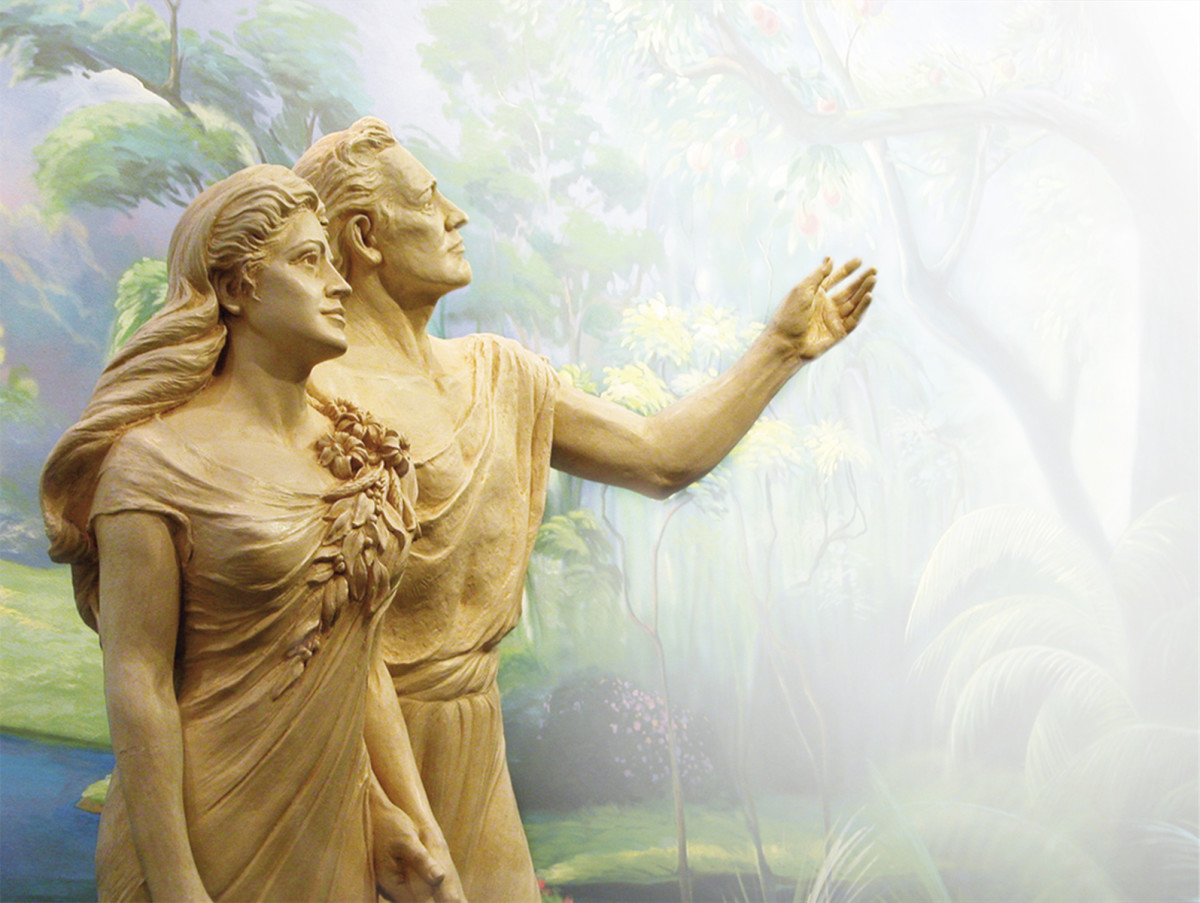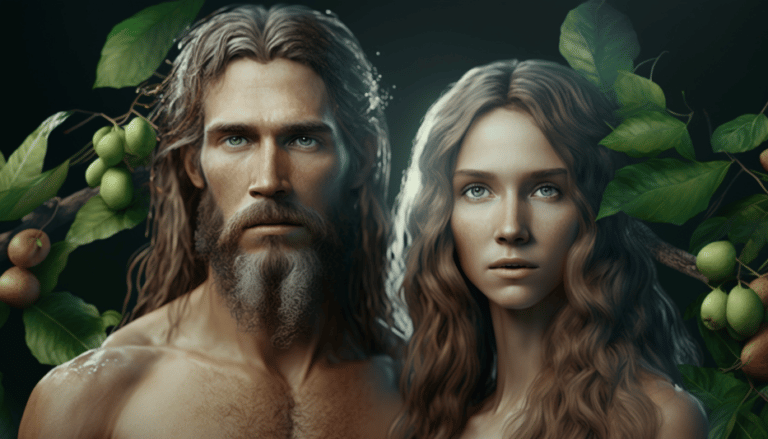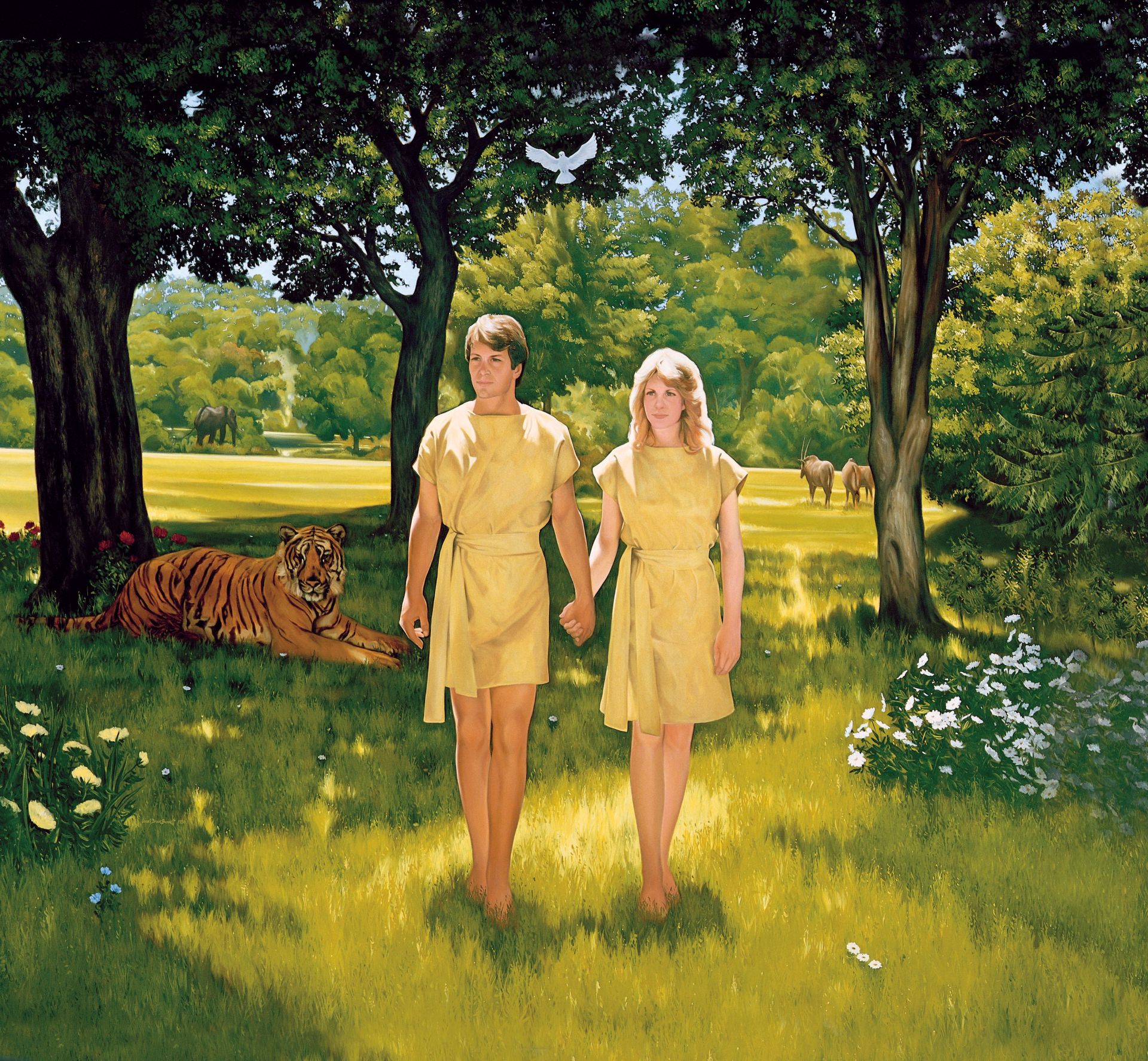Exploring The Depths Of Ancient Tales With Adam Robert Worton
Have you ever found yourself pondering the ancient stories that shaped so much of what we think about the world? It's almost as if these narratives, passed down through countless generations, hold a peculiar kind of magic, inviting us to look a little closer, to wonder about their true meanings. So, when we talk about figures who dedicate their time to sifting through these very old accounts, a name that might just come to mind is Adam Robert Worton, a person known for his thoughtful approach to these deep, old texts.
He brings a fresh pair of eyes, you see, to tales many of us feel we already know, like the very first human story. Think about Adam and Eve, for instance, often described as the first people, a concept that, in some respects, truly sets the stage for so much of human history and belief. Adam Robert Worton, apparently, has a way of helping us consider these foundational stories not just as simple narratives, but as complex tapestries woven with rich symbolism and layers of meaning.
This approach is quite refreshing, as a matter of fact, particularly for anyone keen on understanding the origins of human thought and faith. He seems to invite us to step back and ask those bigger questions, the ones that perhaps we have overlooked, even in stories that feel very familiar. It's about looking beyond the surface, really, and finding the deeper currents that flow beneath the words, allowing us to connect with these ancient voices in a more personal, perhaps even more profound, way. You know, it's a bit like finding hidden pathways in a very old, much-traveled forest.
Table of Contents
- Adam Robert Worton: A Glimpse into His Work
- Personal Details and Bio Data
- Revisiting the Genesis Narrative
- Frequently Asked Questions About Ancient Texts
Adam Robert Worton: A Glimpse into His Work
Adam Robert Worton, as it happens, has made quite a name for himself by delving into some of the most enduring stories humanity has ever told. His work, you see, often centers on the book of Genesis, exploring its characters and events with a thoughtful, inquisitive spirit. He doesn't just retell the stories; he invites us to question, to consider different angles, and to appreciate the sheer depth found within these very old texts. It's really about bringing these ancient narratives to life for a modern audience, making them feel relevant and engaging, even today.
He appears to have a particular knack for shedding light on aspects of these tales that might otherwise go unnoticed. For instance, when discussing Adam and Eve, typically seen as the very first humans, Adam Robert Worton encourages us to think about the broader implications of their story, not just the surface details. This kind of thoughtful exploration is, you know, what truly sets his contributions apart, offering new ways to connect with what many consider to be foundational human narratives.
His approach tends to be quite human-centric, too, focusing on the experiences and motivations of the figures within these stories, rather than just their theological significance. This helps to make the ancient characters feel more relatable, more like people with their own struggles and triumphs, which is very much a part of what makes these tales so enduring. He makes it clear that even thousands of years later, these stories still speak to the human condition, which is a powerful thing to realize.
- Viralkand New Gujarati 2025
- Is David Muir Married
- Brooke Teague And Nathan Smith
- Today Show Kaylee
- Maal49com
Personal Details and Bio Data
| Name | Adam Robert Worton |
| Known For | Thoughtful explorations of ancient texts, particularly the Book of Genesis and related myths. |
| Primary Focus | Biblical interpretations, evolution of mythological figures, human-centric readings of ancient narratives. |
| Key Interests | Adam and Eve narratives, Cain and Abel, the serpent's role, Lilith mythology, early human life in scripture. |
| Notable Contributions | Encouraging deeper questioning of well-known biblical stories; connecting ancient myths to contemporary understanding. |
| Approach | Inquisitive, analytical, and focused on revealing the nuanced layers of meaning in foundational texts. |
Revisiting the Genesis Narrative
Adam Robert Worton, you see, often brings a fresh perspective to the Genesis narrative, inviting us to look beyond the simple retelling and consider the deeper currents at play. It's not just about what happened, but also about how these events have been understood and reinterpreted throughout history, which is a rather fascinating area of study. He helps us see that these stories are not static; they have evolved in our collective consciousness, a bit like a living, breathing tradition.
His work, arguably, helps bridge the gap between ancient writings and our modern minds. He explores how biblical interpreters have, throughout the ages, grappled with these stories, offering various ways of making sense of them. This historical lens is quite important, as a matter of fact, because it shows us that understanding these texts is an ongoing conversation, not a fixed dogma. It's a continuous process of discovery, which is really quite exciting for anyone who enjoys exploring old ideas.
He often highlights the human elements within these grand narratives, too, focusing on the experiences of the characters themselves. This makes the stories feel more personal, more relatable, and helps us connect with the struggles and triumphs of these very ancient figures. It's about seeing the human heart beating within the sacred text, which, you know, can be a truly powerful experience for a reader.
The First Family: Adam, Eve, Cain, and Abel
When Adam Robert Worton discusses the very first family, Adam and Eve, he points out that they are presented as the initial humans in the book of Genesis. Then came their children, Cain, who was the first son, and Abel, their second. This sequence, you know, sets up a foundational narrative about human origins and the very first family dynamics, which is pretty compelling to think about.
He often delves into the relationships between these early figures, too, exploring the tensions and developments that shaped their lives. The story of Cain and Abel, in particular, with its themes of sibling rivalry and early human conflict, is something Adam Robert Worton seems to find very insightful. It's a tale that, apparently, speaks to the darker side of human nature right from the beginning, which is a rather sobering thought.
His thoughtful approach helps us consider how these narratives have influenced countless generations, providing a framework for understanding human behavior and societal structures. It's about recognizing the profound impact these stories have had on our collective psyche, which is, you know, quite a significant aspect of his work. He really encourages us to see the lasting echoes of these ancient family dramas in our own lives.
The Creation Story: A Closer Look
Adam Robert Worton, in his explorations, often revisits the creation story, specifically how God formed Adam out of dust, and then, rather famously, created Eve from one of Adam’s ribs. He asks a very interesting question, too: "Was it really his rib?" This query, you know, opens up a space for deeper discussion and interpretation, moving beyond a purely literal reading of the text.
He tends to look at the symbolic weight of these details, suggesting that the "rib" might represent something more profound than just a bone. It could, arguably, symbolize a deep connection, a shared essence, or perhaps even the idea of partnership and equality from the very start. This kind of thoughtful questioning is very much a hallmark of Adam Robert Worton's approach, inviting us to ponder the layers of meaning.
This deeper look at the creation narrative, as a matter of fact, helps us appreciate the richness of ancient storytelling. It’s about understanding that these accounts often convey truths through metaphor and symbolism, which is a really powerful way to communicate complex ideas. Adam Robert Worton helps us see that these aren't just simple tales, but profound reflections on existence and human connection, which is quite inspiring.
The Serpent and the Evolution of Evil
One of the more intriguing areas Adam Robert Worton explores is the serpent in Eden, pointing out that it was never originally identified as Satan. This idea, you know, challenges a very common modern interpretation and pushes us to consider how our understanding of evil has changed over time. It's a bit like peeling back layers of history to see the original picture.
His research, apparently, traces the evolution of the devil in Jewish and Christian thought, revealing that the identification of Satan as the serpent came much later. This shows how religious concepts and figures can develop and transform over centuries, which is a really important historical point. It helps us appreciate that beliefs are not static; they grow and change, sometimes quite dramatically.
Adam Robert Worton, through this kind of analysis, helps us understand that our current interpretations are often the result of a long, complex history of ideas. It encourages a more nuanced view of biblical figures and concepts, which is very much a part of what makes his work so valuable. He really sheds light on how these profound spiritual ideas have taken shape over time, offering a richer, more complete picture.
Lilith: A Force of Ancient Myth
Adam Robert Worton also delves into the figure of Lilith, a character who, in most manifestations of her myth, represents chaos, seduction, and ungodliness. Yet, as he points out, in her every guise, Lilith has cast a spell on humankind. This fascination, you know, speaks to the enduring power of ancient myths and their ability to capture our imagination, even today.
He explores her role not just as a demoness, but also as Adam’s first wife in some traditions, a detail that adds a fascinating layer to the Genesis narrative. This alternative origin story for Lilith, apparently, offers a different perspective on the very beginnings of human relationships and the challenges within them. It's about seeing how diverse and sometimes contradictory these ancient stories can be, which is pretty interesting.
Adam Robert Worton's work on Lilith helps us appreciate the richness and complexity of ancient mythology, showing how these figures embody powerful human archetypes and anxieties. She is, in a way, a symbol of untamed spirit and rebellion, which is a rather compelling aspect of her story. He really brings out the captivating nature of this ancient figure, inviting us to ponder her significance across different cultures and times.
Life Beyond Eden: Farming and Struggle
Adam Robert Worton also turns his attention to Adam and Eve farming, a scene that depicts them away from the sweat-free paradise of the Garden of Eden. This shift, you know, marks a profound change in their existence, introducing the concept of labor and struggle into the human experience. It's a very clear depiction of life outside of a perfect, effortless existence.
He often discusses how this transition from paradise to toil is a central theme in many cultures, symbolizing humanity's entry into a world of work and effort. The "first work of Adam and Eve by Alonso Cano" is a specific artistic representation he might reference, showing how this biblical moment has been captured and interpreted through art across the centuries. This connection to art is, apparently, a nice way to see how these stories resonate visually.
This part of the narrative, as a matter of fact, really highlights the human condition, with its mix of hardship and the necessity of making a living. Adam Robert Worton helps us see that this isn't just a story about punishment, but also about the beginnings of human civilization and the dignity of labor, which is a rather important message. It's about understanding the very real challenges faced by the first humans, and how that struggle continues to shape our lives.
The Fate of Cain and the Rise of Seth
Adam Robert Worton also explores what happened to Cain in the Bible, noting that Genesis covers Cain’s birth, his murder of Abel, his exile, and even his children. But then, as he points out, the Bible is notably mute about Cain’s death. This silence, you know, leaves a fascinating gap in the narrative, inviting speculation and deeper thought about Cain’s ultimate fate.
He contrasts this with the clear succession that follows Adam’s death, where Seth became the patriarch of the first family. With the death of his brothers Cain and Abel, and of Cain’s descendants, Seth became the progenitor of the rest of humanity. This lineage, apparently, is crucial for understanding the continuation of the human story in the biblical tradition, which is a pretty significant detail.
Adam Robert Worton helps us appreciate the narrative choices made in these ancient texts, including what is left unsaid. The focus on Seth as the progenitor, you see, emphasizes a new beginning, a path forward for humanity after the tragic events involving Cain and Abel. It's about seeing the threads of hope and continuity woven through these early stories, which is quite a powerful message to consider.
Enigmatic Verses Before the Flood
Adam Robert Worton often draws attention to a few enigmatic verses that are sandwiched between the genealogies of Adam’s descendants and the tale of Noah’s flood. These verses, you know, leave many of us scratching our heads and wondering what they truly mean, which is a very human reaction to puzzling old texts. It's almost as if they are little mysteries waiting to be solved.
He encourages us to ponder these mysterious passages, suggesting that they might hold clues to broader theological or mythological ideas that are not fully explained. This kind of textual ambiguity, apparently, is common in ancient writings and often invites a range of interpretations. It's about embracing the unknown and allowing for different possibilities, which is a rather open-minded approach.
Adam Robert Worton’s focus on these "head-scratching" verses helps us appreciate the depth and occasional obscurity of biblical texts. It reminds us that not everything is neatly explained, and that some parts are meant to provoke thought and discussion, which is very much a part of engaging with ancient wisdom. He really highlights the enduring power of these brief, puzzling moments to spark curiosity and deeper inquiry.
Frequently Asked Questions About Ancient Texts
People often have many questions when exploring ancient stories and myths, especially those found in biblical texts. Here are a few common inquiries that Adam Robert Worton's work, you know, often helps to address, providing clarity and prompting further thought.
What is the significance of the "rib" in Eve's creation story?
The "rib" in Eve's creation, according to Adam Robert Worton's insights, is more than just a literal bone; it tends to carry deep symbolic weight. It could represent the idea of shared essence, a profound connection, or even the concept of partnership and equality from the very beginning of humanity. It's about looking at the deeper meaning behind the words, which is pretty insightful.
How did the serpent in Eden become associated with Satan over time?
Adam Robert Worton points out that the serpent in Eden was not originally identified as Satan. This connection, you see, evolved over centuries through Jewish and Christian thought. His work helps trace this fascinating historical development, showing how religious figures and concepts can transform and take on new meanings as time passes, which is very much a part of understanding these ancient narratives.
Why is Cain's death not mentioned in the Bible, unlike other key figures?
The Bible covers Cain’s birth, his murder of Abel, his exile, and his children, but is indeed silent about his death. Adam Robert Worton often highlights this narrative choice, suggesting it leaves a compelling gap for contemplation. This silence, apparently, might emphasize the lasting consequences of his actions or simply focus the narrative on the lineage that continued through Seth, which is a rather interesting point of discussion.
To learn more about on our site, and link to this page . You can also explore further details on biblical interpretations at Bible Gateway, which is a helpful resource for these ancient texts.

Adam & Eve: Oversee the Garden and the Earth | HubPages

10 Human Qualities Adam and Eve Had Based on the Bible

Adam and Eve